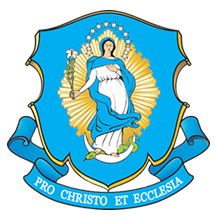
It's called the Grasshopper Chapel, but that isn't its real name. When first built, it was Maria Hilf, German for "Mary's Help." Now, it is officially titled "Assumption Chapel," but still it retains the original nickname.
It was first built in 1877 in honor of the Blessed Mother and in petition to her for relief from hordes of crop-devouring grasshoppers that, for five consecutive summers, had devastated the farmlands around Cold Spring, Minnesota.
The plague of insects started in the middle of June 1873. Farmers in southwestern Minnesota watched what looked like a dark storm cloud moving toward them from the west. But it wasn't a rain-bearing cloud. It was a cloud of millions of hunger-frenzied Rocky Mountain locusts.
It took just a few hours for the grasshoppers to turn fields of waist-high grass, wheat, and other crops into ground-level stubble. The insects weren't sated with just the crops. They ate any vegetation they could find and even wooden farm implements. Some records claim the voracious insects ate the clothes off the backs of farmers.
Farmers fought the insects, but no matter what they tried, the insect onslaught continued. They beat them with rags and towels. Some farmers burned their crops, hoping to incinerate the pests and thwart their advance. They coated sheets of metal with tar and dragged them through the locust-covered fields, hoping the insects would stick to the tar (which they did) and then they would burn them. However, the farmers couldn't snag enough of the grasshoppers to make a difference. They dug trenches and burned tar in them, thinking the smoke would drive off the hoppers. Nothing worked.
The grasshopper siege lasted until there was nothing more for them to eat. Then they moved eastward, leaving decimated crops, tools, and farmers. They left something else as well - their eggs buried in the soil, thus assuring their offspring would repeat the devastation the following year.
In 1877, Governor John S. Pillsbury proclaimed April 26 as a day of prayer throughout Minnesota to ask for God's intervention to stop the grasshoppers.
At the urging of their local priest, Fr. Leo Winter, Catholics in and around Cold Spring began building a chapel in honor of the Blessed Virgin Mary, hoping for her help in stopping the locusts.
When the chapel was completed, the first Mass was celebrated there on Aug. 15, 1877. Local Catholics promised to offer Masses of thanksgiving every Saturday thereafter. According to local legend, by the time the second Mass was offered, not one grasshopper could be found in the area. In 1878, the grasshoppers didn't return, and it's claimed there hasn't been a serious grasshopper invasion since then.
The original chapel, a wooden structure, was destroyed by a tornado in 1894. A new chapel was built in 1951 on the site of Maria Hilf. The new chapel is made of granite blocks from local quarries. Named "Assumption Chapel," it still commemorates the end of the devastating grasshopper plagues, and still honors Mary, the Mother of God.
The chapel is open to the public most days. It is in a peaceful, shady setting on the top of a bluff. Above the entrance to the chapel is a stone inlay with the image of Mother Mary on a cloud and the words Assumpta Est Marie. Below her image are two banished grasshoppers. It serves as a reminder of the Blessed Mother's intercessory power in times of desperation.
There are no pews in the chapel as Mass is no longer celebrated in there. The interior of the chapel is dark when unoccupied, but lights automatically illuminate the interior when someone enters. A statue of the Blessed Mother holding the Child Jesus is on the wall above a polished granite altar. There are several stained-glass windows, and the walls are decorated with prayers to the Blessed Virgin Mary.
At an outdoor altar, Mass is celebrated on various holy days. The primary celebration, of course, is on Aug. 15 each year, the Solemnity of Mary's Assumption into Heaven. The chapel is a reminder of the devastating locusts, but most importantly, the intercessory power of the Blessed Mother.
















